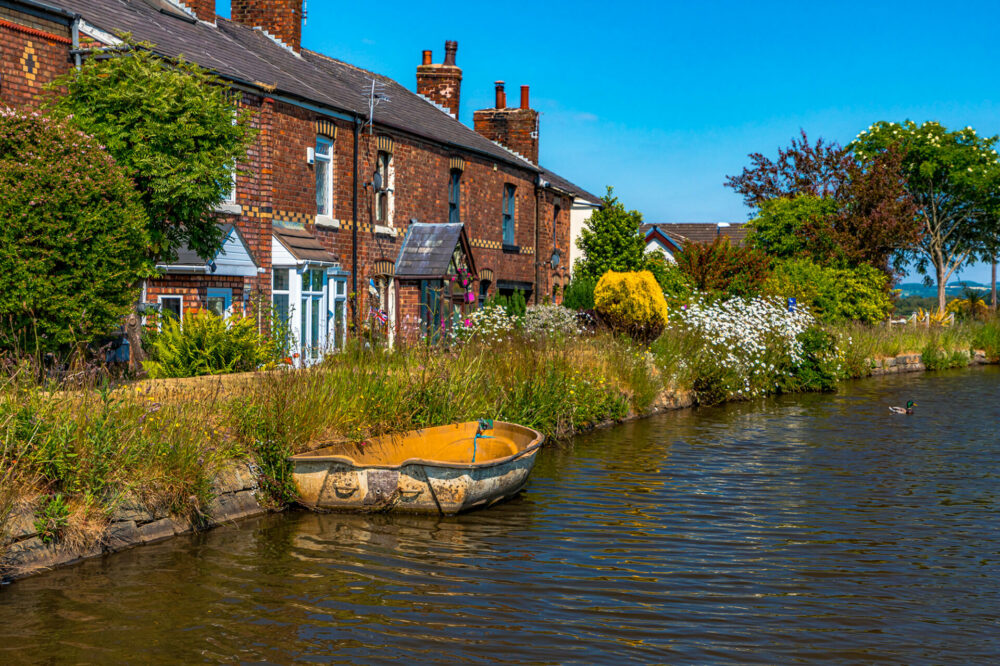Your Guide to the Types of Boats You’ll See on UK Canals
If you’re planning a canal boat holiday or thinking about life on the water, you’ve probably come across the terms narrowboat, widebeam, and barge. While they’re often used interchangeably, these boats each have distinct features, functions, and personalities.
Let’s break down the key differences so you can spot them on the cut — or even decide which is right for your next adventure!
🚤 1. Narrowboats
The classic UK canal boat
- Width: ~6 feet 10 inches
- Length: Typically 30–70 feet
- Purpose: Designed specifically for navigating the narrow locks of the UK canal system
- Features: Long, slim, and low-profile with a flat deck and cabin
- Where they go: Can cruise the entire connected UK canal network, including tight locks and tunnels
Why choose a narrowboat?
Perfect for holidays and full-time cruising. Their size means they can go almost anywhere on the inland waterways. If you want flexibility and adventure, a narrowboat is the way to go.
📝 Did you know? Some canals were literally built to match the size of a working narrowboat — that’s how iconic they are.
🚢 2. Widebeam Boats
More space, less access
- Width: Over 7 feet — typically 10 to 12 feet
- Length: Similar to narrowboats (up to 70 feet)
- Purpose: Offers more internal living space, often used as floating homes
- Features: Wider interior for residential comforts like full kitchens, bedrooms, and even log burners
- Where they go: Limited cruising — can’t fit through all narrow locks or tunnels
Why choose a widebeam?
Ideal for those who want a floating apartment with more room to spread out. Great for static living or limited cruising along wide canals and rivers like the Kennet & Avon or the Thames.
⚠️ Be aware: You’ll need to carefully plan your route — many northern canals (like parts of the Leeds & Liverpool) are off-limits to widebeams.
⚓ 3. Barges
A broader, catch-all term
- What is a barge? Originally, “barge” referred to any flat-bottomed working boat used to move cargo. Today, it often describes large, wide vessels that may or may not be motorised.
- Dutch barges: A popular style with curved bows and large cabins, often used as liveaboards
- Modern usage: “Barge” can refer to anything from a commercial craft to a widebeam-style home boat
Why the confusion?
In the UK, “barge” is sometimes used informally to describe widebeam boats, especially by people unfamiliar with canal terminology.
📝 Pro tip: If you’re hiring or buying, check the specs. If someone says “barge,” clarify whether they mean a Dutch barge, widebeam, or another type entirely.
🧭 Quick Comparison Table
| Feature | Narrowboat | Widebeam | Barge |
|---|---|---|---|
| Width | ~6’10” | 10–12 feet | Varies (often wide) |
| Access to network | Almost everywhere | Limited | Depends on type |
| Best for | Cruising & holidays | Residential comfort | Living or commercial use |
| Appearance | Long & slim | Wider version of NB | Often traditional & curved |
🛶 Which One Is Right for You?
- Going on holiday? → Narrowboat — fits everywhere, easy to handle
- Living aboard? → Widebeam or Dutch barge — space for proper home comforts
- Need cargo space or a floating business? → Look into barges
⚓ Final Thoughts
Whether it’s a sleek narrowboat winding through Wigan locks, a widebeam moored peacefully in the countryside, or a character-filled Dutch barge in a marina, each vessel has its charm and purpose.
The best boat for you depends on where you want to cruise, how much space you need, and the kind of life you want on the water.
Have a favourite type of canal boat? Tell us in the comments — or tag a friend who needs to know the difference!


